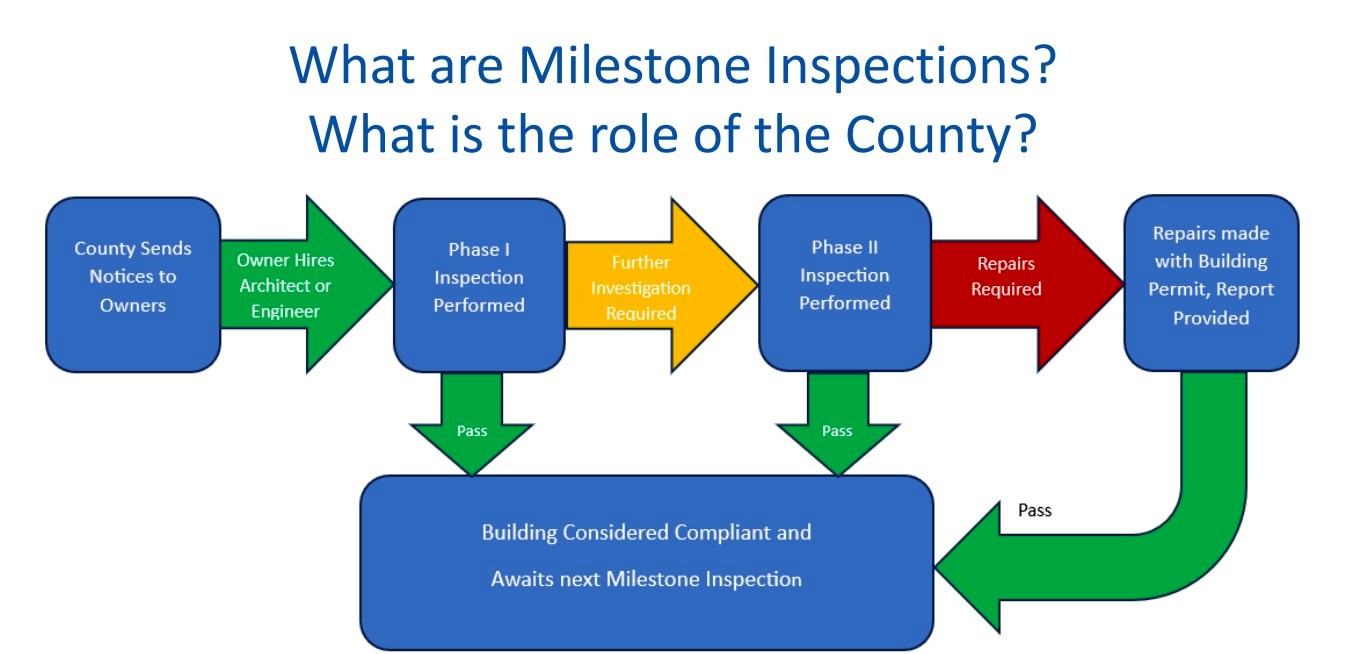Charlotte County
sent notices to owners of 168 condominiums built decades
ago that are at least three stories high, informing them
the structures must undergo comprehensive inspections
under a new state law.
Charlotte County Building Official Shawn McNulty
explained what the new law means and how it came about
during the Board of County Commissioners April 16
workshop session.
“As you may or may not remember, on June 24, 2021, a
large section of the 40-year-old, 12-story Champlain
Towers [South] condominium building collapsed in Miami’s
Surfside neighborhood, where 98 lives were lost,” he
said.
The incident prompted an emergency session of the
Florida Legislature, which passed Senate Bill 4D
Building Safety, requiring condominiums located within 3
miles of a coastline to be inspected at 25 years and
every 10 years after that.
But SB 4D was modified when Gov. Ron DeSantis on June 9,
2023, signed into law Senate Bill 154, also known as the
Glitch Bill, which relaxes the original bill and gives
some control to local government.
Under the Glitch Bill, instead of mandating buildings
within 3 miles of a coastline be inspected at 25 years
and 10 years after that, now the 25-year requirement is
an option for local governments to adopt depending on
local circumstances, such as proximity to salt water.
There was no change to the minimum requirement to
inspect buildings once they reach 30 years of age,
however.
In Charlotte County, there are a total of 272
condominium buildings that will be subject to the law.
By December, another 10 will be 25 years or older.
The Florida Building Commission must adopt rules
establishing a building safety program by Dec. 31, and
in Charlotte County the Community Development department
is working on a process to ensure compliance with all
effected buildings that require a milestone inspection,
McNulty said.
 |
There will be a two-phase inspection
process in which the owners would have an architect or
engineer ensure the buildings are structurally sound and
safe.
The cost of the inspections will be borne by the buildings’
owners. The county is not going to do the inspections but
will track them, McNulty said.
There are stringent timelines in the law regarding repairs,
and if the repairs are not made, the building could be
condemned, he added.
He provided commissioners with three options available: a
25-year inspection countywide, a 25-year inspection
requirement for a designated area of the city, such as
within 3 miles of the coast and a 30-year requirement for
the rest of the county, or take no action, keeping the
30-year inspection regulation countywide, regardless of
proximity to the water.
The county does not have jurisdiction over Punta Gorda
condominiums. The city’s government will enact the law for
structures located in the city.
Although no action was taken during the workshop session,
commissioners favored adopting a more stringent option as
some cited building deterioration not only from salt water
intrusion but from salt air.
Commission Chair Bill Truex, who is a builder, said his
company made extensive structural repairs to a three-story,
concrete structure that was not properly built and less than
30 years old.
He recommended adopting a requirement for inspections to be
conducted at 25 years and at least within 3 miles of the
coastline.
Both commissioners Chris Constance and Ken Doherty leaned
toward favoring a stricter inspection code for older
condominium buildings.
At the conclusion of his presentation, McNulty said in
March, details of a three-year investigation in the collapse
of the Champlain Towers South in a preliminary report cited
“construction deficiencies in the original construction have
been identified as a likely cause of the building’s
failure.”